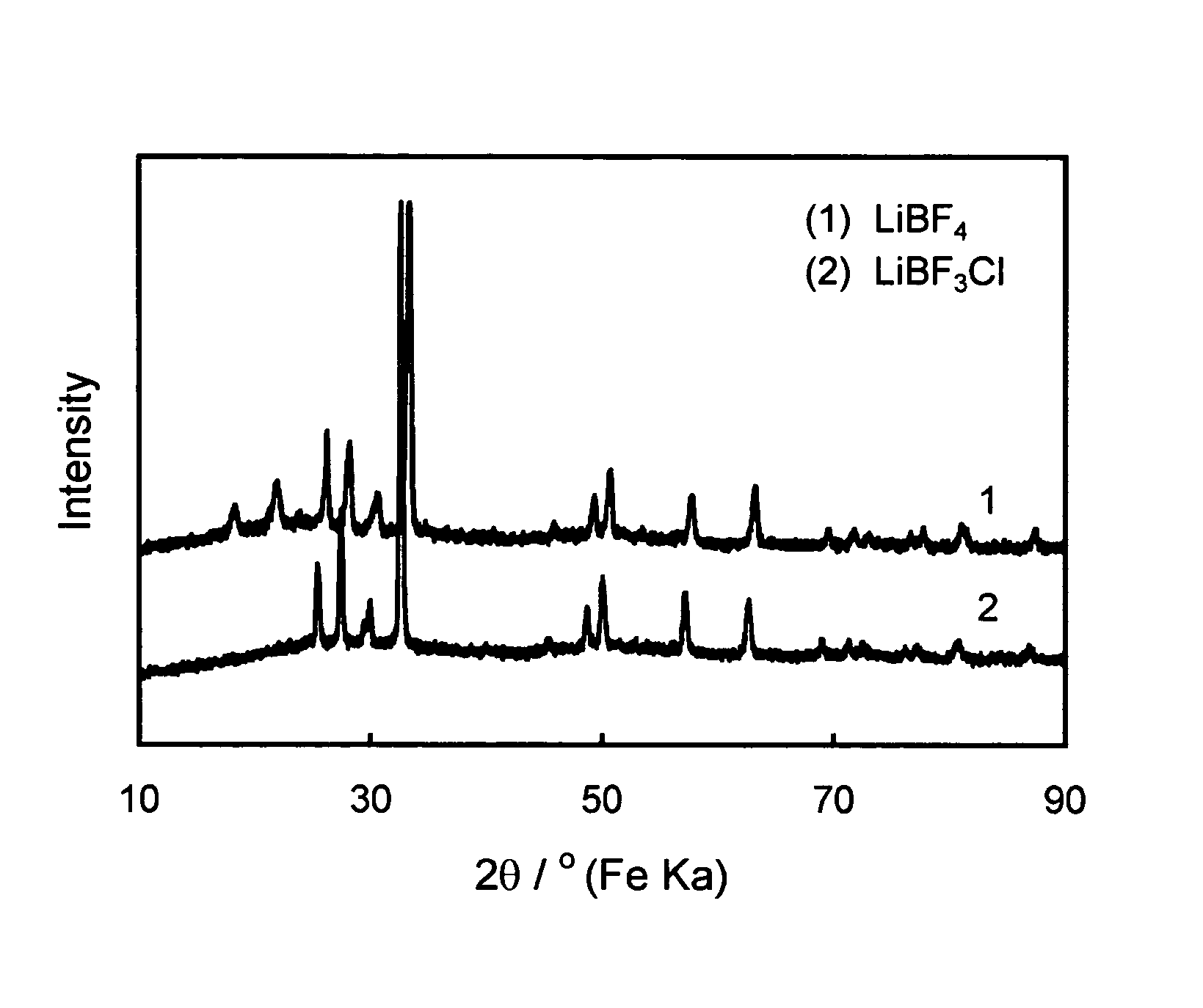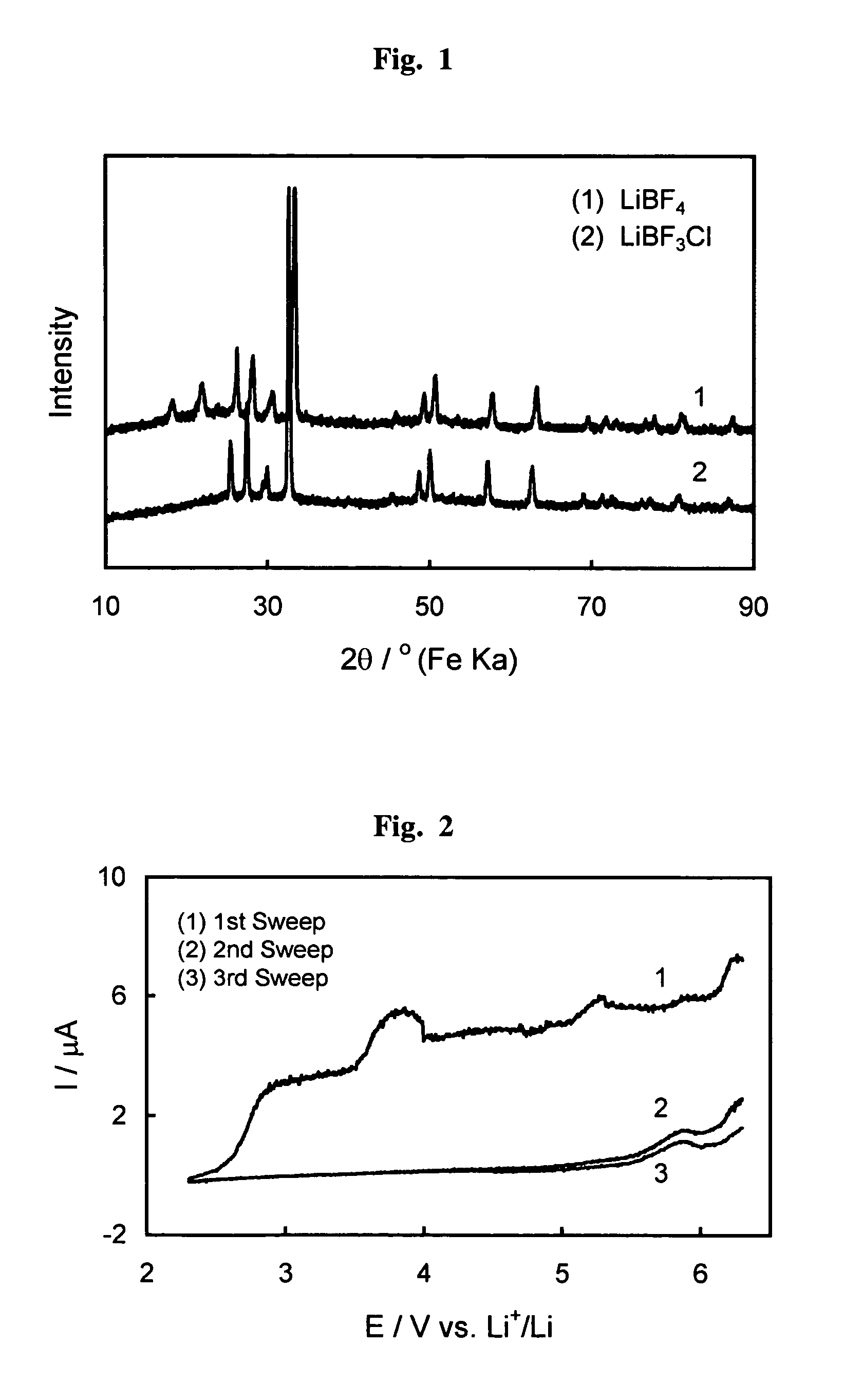Fluorohaloborate salts, synthesis and use thereof
a technology of fluorohaloborate and haloborate salt, applied in the field of fluorohaloborates, can solve the problems of limited success, ineffective facilitation of libf/sub>4, and few found to meet the above requirements
- Summary
- Abstract
- Description
- Claims
- Application Information
AI Technical Summary
Problems solved by technology
Method used
Image
Examples
example 1
Synthesis of LiBF3Cl
[0030]In a glove-box having a moisture level less than 20 ppm, 4.26 g (0.03 mol) of BF3 etherate is diluted with 20 ml of dimethoxyethane and placed in a Teflon reactor, to which 1.27 g (0.03 mol) of anhydrous LiCl is added with stirring. Small bubbles of diethyl ether immediately appear on the surface of LiCl crystals, and the LiCl starts to dissolve. The mixture is stirred for 16 hours at 40° C. Any residual LiCl is filtered out. The filtrate is concentrated under reduced pressure to 6 ml, cooled to 20° C., and poured into 30 ml diethyl ether. The solid LiBF3Cl precipitate is filtered and washed with diethyl ether, followed by drying for 1 hour in a flow of nitrogen and then at 100-110° C. under vacuum for 8 hours. A total of 2.61 g (79% of theory) of LiBF3Cl is obtained.
[0031]Crystallographic structure of the salt prepared above is characterized by X-ray diffraction with FeKa radiation. FIG. 1 compares X-ray diffraction patterns of inventive LiBF3Cl and prior ...
example 2
Synthesis of NaBF3Br
[0034]The procedure of Example 1 is repeated with the substitution of 3.09 g (0.03 mole) of anhydrous NaBr for LiCl to yield 6.4 g of NaBF3Br.
example 3
Synthesis of KBF3I
[0035]The procedure of Example 1 is repeated with the substitution of 4.98 g (0.03 mol) of anhydrous KI for LiCl to yield 10.2 g of NaBF3Br.
PUM
 Login to View More
Login to View More Abstract
Description
Claims
Application Information
 Login to View More
Login to View More - R&D
- Intellectual Property
- Life Sciences
- Materials
- Tech Scout
- Unparalleled Data Quality
- Higher Quality Content
- 60% Fewer Hallucinations
Browse by: Latest US Patents, China's latest patents, Technical Efficacy Thesaurus, Application Domain, Technology Topic, Popular Technical Reports.
© 2025 PatSnap. All rights reserved.Legal|Privacy policy|Modern Slavery Act Transparency Statement|Sitemap|About US| Contact US: help@patsnap.com



